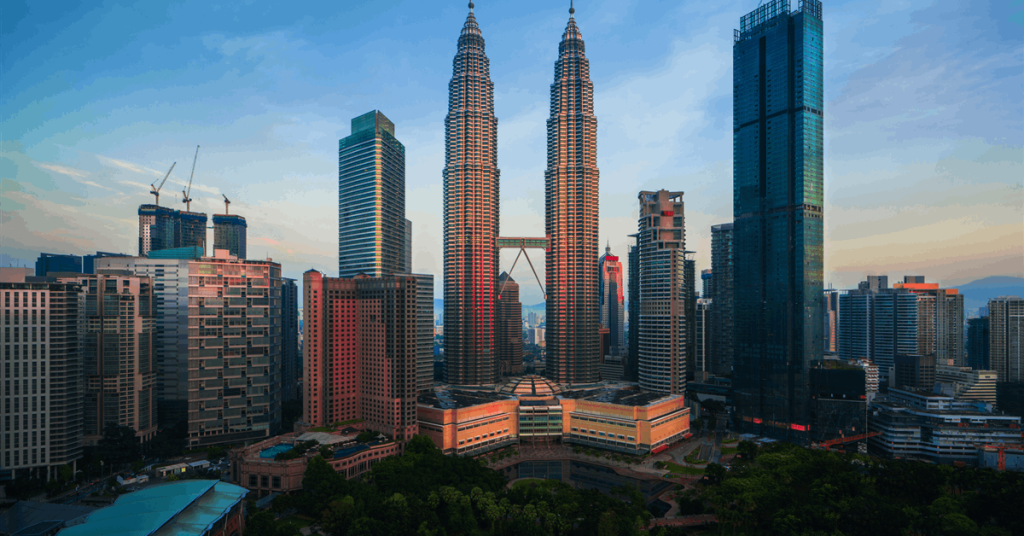Malaysia’s national oil and gas company, which owns a 25 percent stake in LNG Canada, has sent its first cargo from the Kitimat, British Columbia project to Japan.
The shipment embarked Monday through the 174,000-cubic-meter (6.14 million cubic feet) Puteri Sejinjang LNG vessel, Petroliam Nasional Bhd. (Petronas) said in a press release. It did not disclose the volume.
The LNG Canada consortium earlier announced the start-up of the 14 million metric tons per annum (MMtpa) project on June 30. The facility targets Asia.
“Each LNG Canada joint venture participant will provide its own natural gas supply and individually offtake and market their respective share of liquified natural gas from LNG Canada, starting today”, LNG Canada Development Inc., the joint venture, said in last month’s start-up announcement.
Announcing its maiden dispatch from the project, Petronas said, “LNG Canada is a critical component of PETRONAS’ global LNG strategy to diversify its supply portfolio and increase market flexibility. Strategically located on Canada’s west coast and connected to PETRONAS’ upstream gas assets in Northeast B.C., LNG Canada offers a direct and efficient shipping corridor to key North Asian markets including Japan, South Korea and China”.
Petronas noted, “Designed to be one of the lowest-emissions LNG export facilities globally, LNG Canada features energy-efficient gas turbines, advanced methane-leak detection and mitigation systems, and power sourced from the BC Hydro grid, predominantly powered by hydroelectric and renewable energy. These innovations enable the facility to operate with a GHG intensity that is approximately 35 percent lower than the existing best-performing LNG plants around the world, and about 60 percent below the global average”.
Adif Zulkifli, Petronas executive vice president and chief executive for gas and maritime business, commented, “PETRONAS’ first cargo sail-away is the culmination of years of perseverance to realize our vision for Canadian LNG exports to the Asia Pacific region”.
LNG Canada is the first LNG export facility to become operational in the country, according to the developers.
“With abundant resources the world needs and a strategic location to deliver them, shovel-ready projects like this are how B.C. will become the engine of a newly revitalized, more independent, and growing Canada”, British Columbia Premier David Eby said in comments for the facility’s start-up.
The partners are studying the potential to expand the two-train facility with two more trains, which would double the capacity.
Majority owner Shell PLC has a 40 percent interest. Japan’s Mitsubishi Corp. and China’s state-backed PetroChina Co. Ltd. each own 15 percent. Korea Gas Corp. holds a 5 percent stake. The Haisla Nation is also involved in the project as site host.
Shell said announcing start-up, “As Asian markets transition away from coal, exports from LNG Canada are well-positioned to play a crucial role in global decarbonization efforts”.
In its LNG outlook published February, Shell said Asia – particularly China and India – is set to drive a growth in global LNG demand to 630-718 MMtpa by 2040. Emission reduction efforts in the heavy industry and transport, as well as power demand in the AI sector, would also spur the increase in demand, according to Shell.
In March it announced a goal of raising its annual LNG sales by 4-6 percent through 2030.
To contact the author, email jov.onsat@rigzone.com
What do you think? We’d love to hear from you, join the conversation on the
Rigzone Energy Network.
The Rigzone Energy Network is a new social experience created for you and all energy professionals to Speak Up about our industry, share knowledge, connect with peers and industry insiders and engage in a professional community that will empower your career in energy.
element
var scriptTag = document.createElement(‘script’);
scriptTag.src = url;
scriptTag.async = true;
scriptTag.onload = implementationCode;
scriptTag.onreadystatechange = implementationCode;
location.appendChild(scriptTag);
};
var div = document.getElementById(‘rigzonelogo’);
div.innerHTML += ” +
‘‘ +
”;
var initJobSearch = function () {
//console.log(“call back”);
}
var addMetaPixel = function () {
if (-1 > -1 || -1 > -1) {
/*Meta Pixel Code*/
!function(f,b,e,v,n,t,s)
{if(f.fbq)return;n=f.fbq=function(){n.callMethod?
n.callMethod.apply(n,arguments):n.queue.push(arguments)};
if(!f._fbq)f._fbq=n;n.push=n;n.loaded=!0;n.version=’2.0′;
n.queue=[];t=b.createElement(e);t.async=!0;
t.src=v;s=b.getElementsByTagName(e)[0];
s.parentNode.insertBefore(t,s)}(window, document,’script’,
‘https://connect.facebook.net/en_US/fbevents.js’);
fbq(‘init’, ‘1517407191885185’);
fbq(‘track’, ‘PageView’);
/*End Meta Pixel Code*/
} else if (0 > -1 && 77 > -1)
{
/*Meta Pixel Code*/
!function(f,b,e,v,n,t,s)
{if(f.fbq)return;n=f.fbq=function(){n.callMethod?
n.callMethod.apply(n,arguments):n.queue.push(arguments)};
if(!f._fbq)f._fbq=n;n.push=n;n.loaded=!0;n.version=’2.0′;
n.queue=[];t=b.createElement(e);t.async=!0;
t.src=v;s=b.getElementsByTagName(e)[0];
s.parentNode.insertBefore(t,s)}(window, document,’script’,
‘https://connect.facebook.net/en_US/fbevents.js’);
fbq(‘init’, ‘1517407191885185’);
fbq(‘track’, ‘PageView’);
/*End Meta Pixel Code*/
}
}
// function gtmFunctionForLayout()
// {
//loadJS(“https://www.googletagmanager.com/gtag/js?id=G-K6ZDLWV6VX”, initJobSearch, document.body);
//}
// window.onload = (e => {
// setTimeout(
// function () {
// document.addEventListener(“DOMContentLoaded”, function () {
// // Select all anchor elements with class ‘ui-tabs-anchor’
// const anchors = document.querySelectorAll(‘a .ui-tabs-anchor’);
// // Loop through each anchor and remove the role attribute if it is set to “presentation”
// anchors.forEach(anchor => {
// if (anchor.getAttribute(‘role’) === ‘presentation’) {
// anchor.removeAttribute(‘role’);
// }
// });
// });
// }
// , 200);
//});

